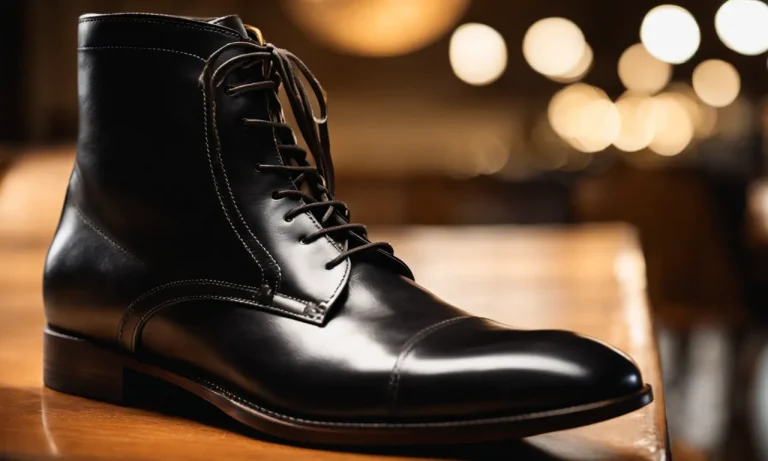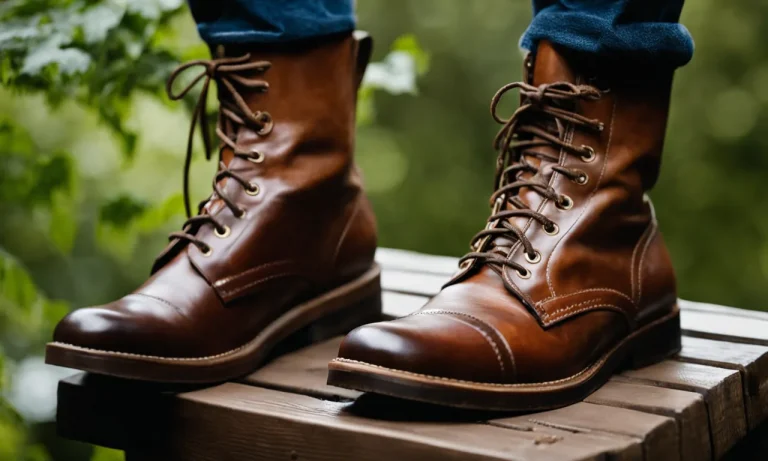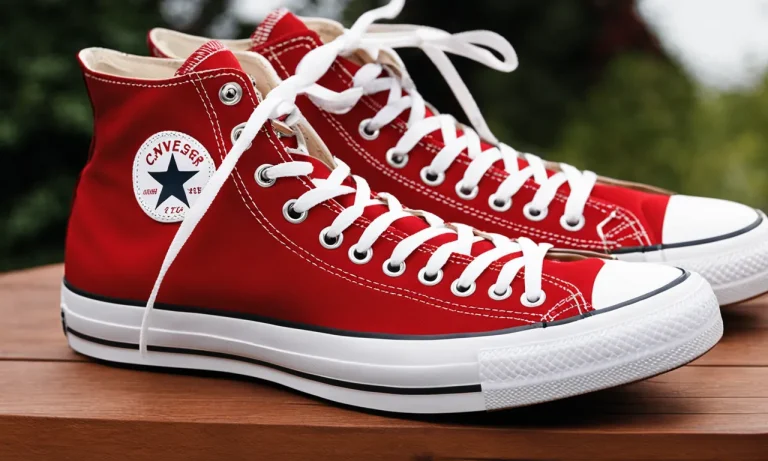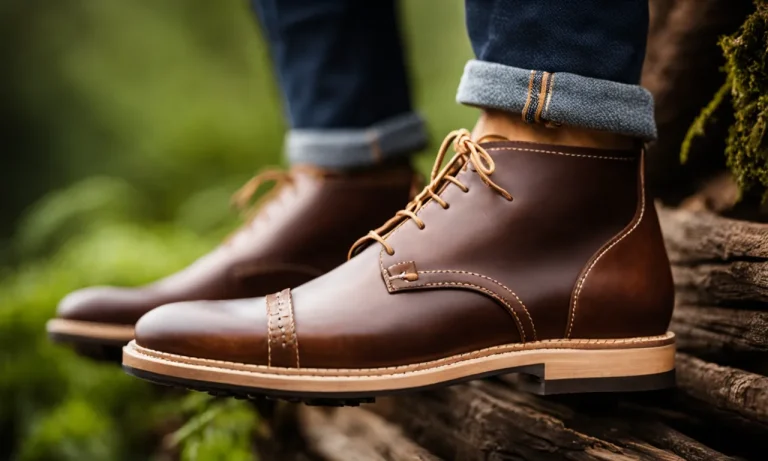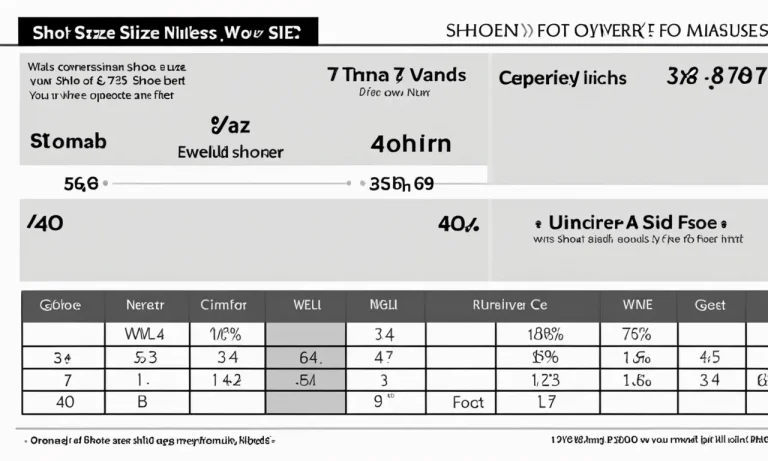Having the right footwear is crucial for preventing slips and falls, especially if you work in an environment with slick floors. Non-slip shoes provide added traction and grip to keep you steady on your feet.
But with so many shoe options on the market, how can you identify which ones actually offer anti-slip protection? Read on as we breakdown what makes a shoe non-slip and provide tips for selecting the best pair to suit your needs.
If you’re short on time, here’s a quick answer: Look for shoes marked as ‘slip-resistant’ and check the sole for a tread pattern that is not completely flat or smooth.
Sole Material and Tread Pattern
When it comes to determining whether a shoe is non-slip, one of the key factors to consider is the sole material and tread pattern. These two elements play a crucial role in providing traction and grip on various surfaces, especially slippery ones.
Rubber or synthetic compounds
Shoes with soles made from rubber or synthetic compounds are generally more slip-resistant compared to those with leather or smooth soles. Rubber has natural gripping properties and provides excellent traction, making it a popular choice for slip-resistant footwear.
Synthetic compounds, such as polyurethane or thermoplastic rubber, can also offer similar benefits.
Deep lugs, channels, indentations
Another important aspect to consider is the tread pattern on the sole. Look for shoes with deep lugs, channels, or indentations on the sole. These features help to disperse water, oil, and other liquids, preventing them from getting trapped between the sole and the walking surface.
This, in turn, enhances traction and reduces the risk of slipping.
Avoid flat, smooth soles
Avoid shoes with flat or smooth soles, as they tend to provide less grip on slippery surfaces. Instead, opt for shoes with textured or patterned soles that increase the shoe’s contact with the ground. The more surface area that comes into contact with the floor, the better the traction.
It’s important to note that while sole material and tread pattern are crucial factors in determining if a shoe is non-slip, they are not the only ones. Other factors, such as the shoe’s overall design, weight distribution, and fit, also play a significant role in ensuring stability and preventing slips.
Slip-Resistant Markings
When it comes to selecting non-slip shoes, one of the key factors to consider is the presence of slip-resistant markings. These markings indicate that the shoe has been specifically designed to provide better traction and reduce the risk of slipping.
SR meaning slip resistant
One common slip-resistant marking you may come across is the “SR” symbol. SR stands for slip-resistant, and its presence on a shoe indicates that it has undergone testing to determine its slip resistance.
This marking is often found on the sole or insole of the shoe and serves as a clear indicator of its non-slip properties.
Non-marking sole
Another important aspect to look for in slip-resistant shoes is a non-marking sole. A non-marking sole is designed to leave minimal scuffs or marks on the floor, making it ideal for industries where maintaining the cleanliness and appearance of the floor is crucial.
Non-marking soles are typically made of materials that do not leave behind any residue or streaks, ensuring that you can move around confidently without worrying about leaving a trail behind.
Meets or exceeds ASTM standards
When evaluating the slip-resistant qualities of a shoe, it is also important to check if it meets or exceeds ASTM standards. The American Society for Testing and Materials (ASTM) has established specific standards for slip resistance, and shoes that meet or exceed these standards are considered highly slip-resistant.
Look for labels or markings that indicate compliance with ASTM standards, such as “Meets ASTM F2913-17” or “Exceeds ASTM F1677-96 (Mark II)”.
It’s worth noting that slip-resistant shoes are not only beneficial for professionals working in industries with slippery surfaces, such as restaurants or healthcare settings, but also for anyone looking to enhance their safety while walking on wet or slippery surfaces.
While slip-resistant markings, non-marking soles, and compliance with ASTM standards are crucial indicators of a shoe’s slip-resistant qualities, it’s always a good idea to try on the shoe and test its grip on different surfaces to ensure maximum safety and comfort.
Intended Use
When determining if a shoe is non-slip, it is essential to consider its intended use. Different industries and environments require specific features and characteristics in their footwear to ensure safety and prevent accidents. Here are some common types of shoes and their intended uses:
Work shoes
Work shoes are designed for people who work in industries where slippery surfaces are a common hazard. These shoes often have non-slip outsoles that provide excellent traction on wet or oily surfaces. They are suitable for professions such as construction, manufacturing, and warehouse work.
Work shoes may also have other safety features like toe protection or electrical hazard resistance, depending on the specific job requirements.
Restaurant and kitchen shoes
In the food service industry, where spills and slippery floors are prevalent, having non-slip shoes is crucial to prevent accidents and injuries. Restaurant and kitchen shoes are specifically designed with slip-resistant outsoles that offer exceptional grip on wet or greasy surfaces.
They are also typically made with materials that are easy to clean and resistant to spills, stains, and odors.
Healthcare and hospital shoes
Healthcare professionals, including nurses and doctors, often work in fast-paced environments where quick movements and stability are essential. Non-slip shoes designed for healthcare settings have slip-resistant soles that provide grip and stability on various surfaces, including hospital floors.
These shoes are also designed to be comfortable for long hours of standing and walking, with features like cushioning and arch support.
It is important to note that while the intended use of a shoe can provide some indication of its non-slip properties, it is still recommended to look for specific certifications or standards that ensure the shoe’s slip resistance. These certifications may vary depending on the industry or region.
Additionally, reading customer reviews and testimonials can also provide valuable insights into the shoe’s slip-resistant capabilities.
Sole Hardness
When determining whether a shoe is non-slip, one important factor to consider is the hardness of the sole. A harder sole is generally more resistant to compression, which means it is less likely to lose its grip on slippery surfaces.
This is because the harder sole provides a greater surface area of contact with the ground, increasing traction and stability.
Harder sole prevents compression
A shoe with a softer sole may compress when pressure is applied, which can cause a reduction in traction. On the other hand, a shoe with a harder sole will retain its shape and grip, even under pressure.
This is especially important in work environments where employees may be walking on wet or oily surfaces.
Imagine a scenario where a restaurant server is carrying a tray of drinks and suddenly encounters a spilled liquid on the floor. With a shoe that has a harder sole, the server would be less likely to slip and spill the drinks, as the sole would maintain its grip on the slick surface.
Look for high durometer ratings
One way to determine the hardness of a shoe’s sole is to look for the durometer rating. The durometer rating measures the hardness of a material, including the rubber used in shoe soles. A higher durometer rating indicates a harder sole, which is generally more slip-resistant.
When shopping for non-slip shoes, check the product description or ask a salesperson for the durometer rating. A shoe with a durometer rating of 70 or higher is considered to have a hard sole that provides excellent slip resistance.
It’s important to note that the durometer rating is just one factor to consider when determining the slip resistance of a shoe. Other factors, such as tread pattern and outsole material, also play a role in a shoe’s ability to provide traction on slippery surfaces.
For more information on shoe sole hardness and slip resistance, you can visit websites like OSHA or CCOHS which provide comprehensive resources on workplace safety.
Testing Shoes Before Purchase
When it comes to choosing the right shoes, especially if you’re looking for non-slip options, it’s important to test them out before making a purchase. Here are some tips on how to determine if a shoe is non-slip:
Walk on slick surfaces
One of the best ways to test the slip-resistance of a shoe is to walk on slick surfaces. Look for areas with polished floors or tiles that may be prone to becoming slippery when wet. Take a few steps and see how well the shoes grip the surface.
If you feel confident and stable, it’s a good indicator that the shoe has good slip resistance.
Check for good grip and traction
Another important aspect to consider is the shoe’s grip and traction. Look for shoes that have deep treads or patterns on the soles, as these can provide better traction on slippery surfaces. You can also run your fingers along the sole to feel the texture and determine if it would provide enough grip.
Try on both wet and dry floors
It’s important to test the shoes on both wet and dry surfaces, as slip resistance can vary depending on the conditions. If possible, find a store with a designated area for testing shoes on wet surfaces. Take a few steps on the wet floor and observe how well the shoes grip.
Repeat the same test on a dry surface to compare the shoe’s performance.
Keep in mind that slip resistance can also depend on factors such as the shoe’s material, design, and the type of surface you’ll be walking on. If you’re unsure about a particular shoe, don’t hesitate to ask for assistance from the store staff or look for reviews online.
Websites like Consumer Reports provide in-depth reviews and ratings on various shoe brands and models, including slip resistance.
By taking the time to test shoes before purchasing, you can ensure that you’re getting a pair that will keep you safe and stable, even on slippery surfaces. So don’t forget to put those shoes to the test before making a decision!
Conclusion
Knowing what qualities to look for will make identifying true non-slip shoes much easier. Focus on specialized tread patterns, slip-resistant markings, intended use, and sole hardness. Test shoes on wet and dry surfaces before purchase to ensure adequate grip.
Wearing proper anti-slip footwear is a simple way to avoid hazardous spills and keep yourself injury-free.

